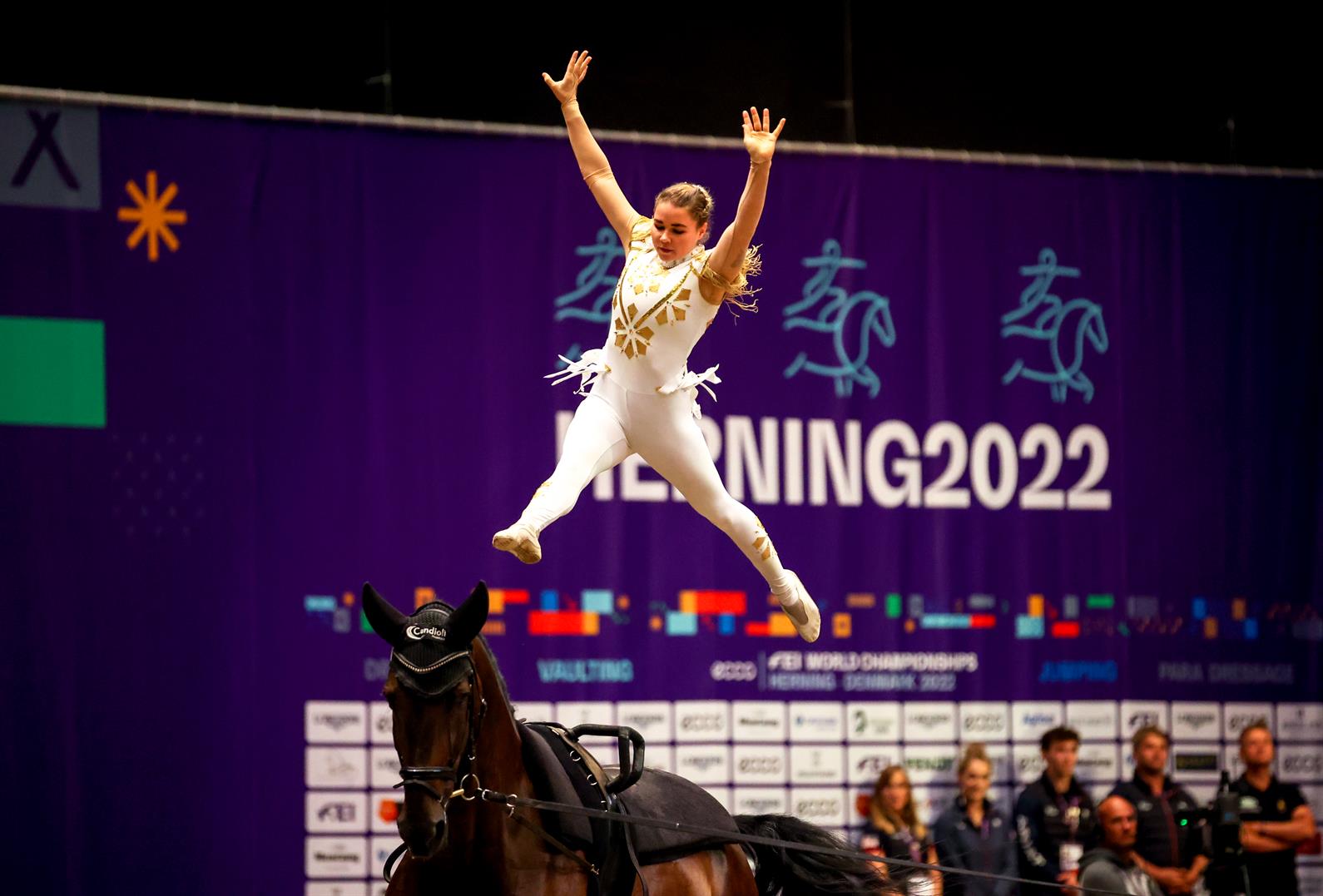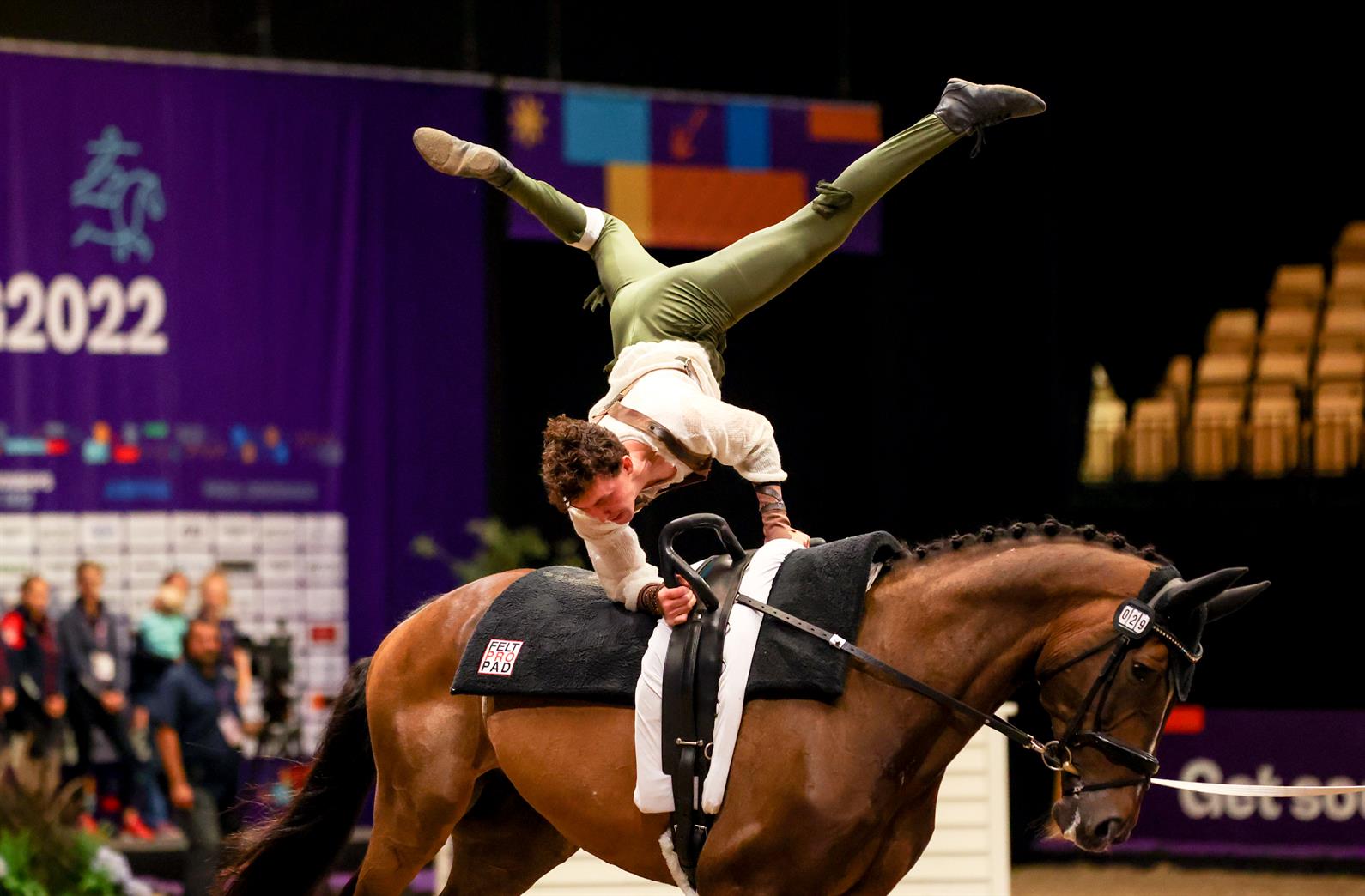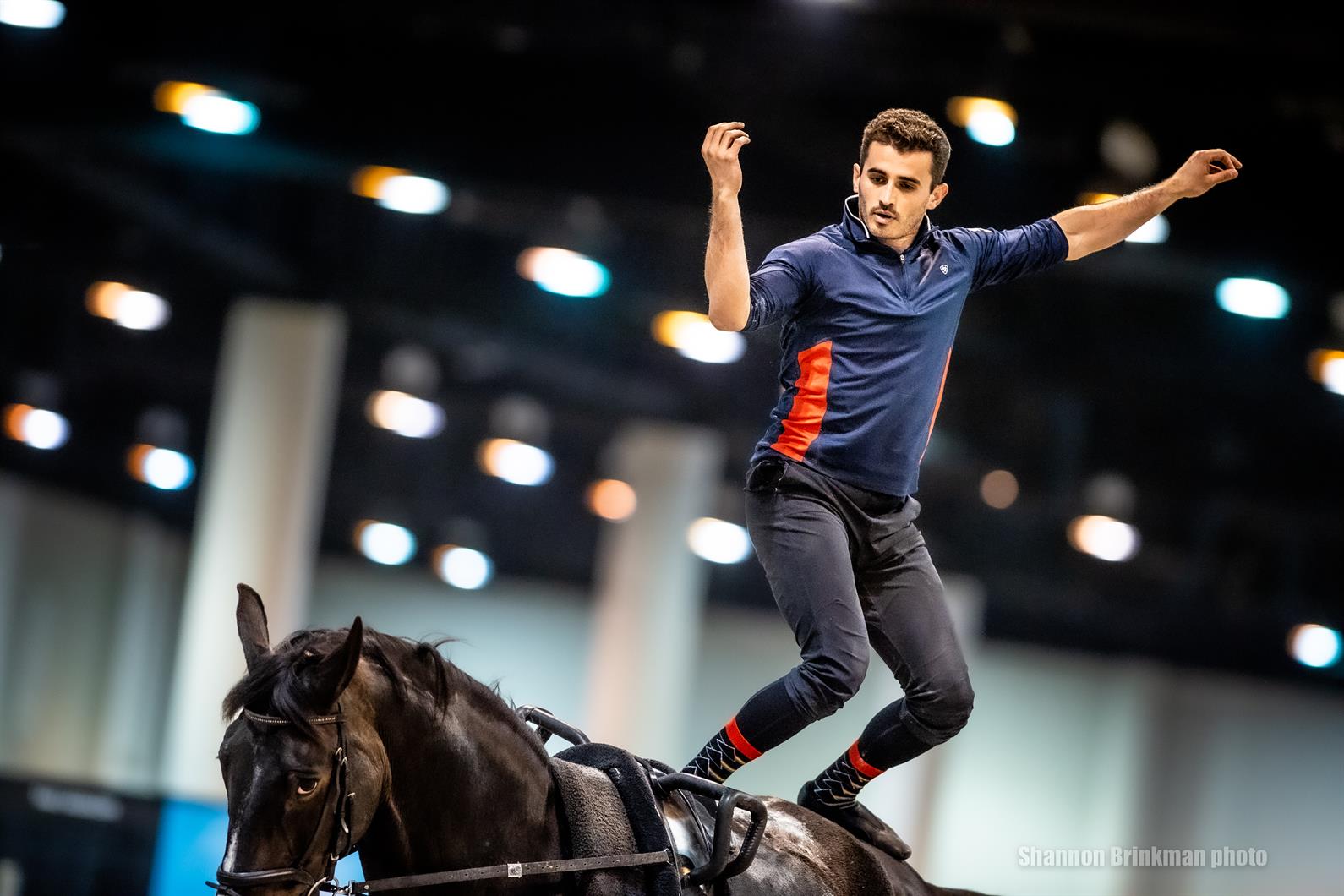Krista Mack, the head trainer for Woodside Vaulters in Woodside, Calif., described vaulting as gymnastics on horseback combined with theatrical dance and ice skating.
“Our routines are also done to music, and there's choreography involved, but we also have a set of compulsories that each vaulter needs to do,” Mack said. “Some vaulters also have some sort of love of dance or gymnastics too, so vaulting becomes very appealing to them in that aspect.”
Vaulting also emphasizes harmony between the rider and the horse, according to Samantha Matson, who coaches with Silicon Valley Vaulting Club in Saratoga, Calif.
“The vaulter’s movements, their gymnastics and dance movements, can be emphasized by the horse’s movement,” Matson explained. “The horse’s movement can amplify what the vaulter can do if it's working correctly.”

- Despite the sport basically being gymnastics on horseback, you don’t need experience in gymnastics or horses to try vaulting.
KyLynn James runs Oak Hills Vaulting in Salem, Utah, one of the largest vaulting programs in the country, and has taught students of all ages.
“I always have parents ask me, do [students] need to have gymnastics experience, a riding background, a horse background, or a dance background? And when I say no, I think that's surprising to them,” James said. “They're like, ‘Well, are you sure? They can't even do a cartwheel.’ I'm like, ‘Yeah, because we're not doing cartwheels our first time we get on a horse.’”
Most of James’s students come into training knowing nothing about horses, and James frequently reminds her trainers to start from scratch. This involves training in safety, horsemanship, and barn etiquette.
In addition to the skills themselves, James and her trainers make sure to explain why each technique is necessary.
“Why do we not walk up right behind a horse? Why do we not walk up right in front of a horse? Why do we approach the horse from the shoulder? Why do we brush the horse before we get on? Why do we pick out their feet? Why do we use certain words and terminology? And why are we not yelling and screaming and being rambunctious and crazy?” she explained.
- Pay attention to your habits.
“The habits that the kids learn in their first three to four lessons are the habits that will take them through the rest of their horsemanship career, whatever that may be,” James said. “I have a lot of kids who come to me for 10 to 20 weeks, and then choose to go on and pursue other aspects of equestrian. But if they do choose to stay with vaulting, we want those good habits—not only their vaulting skills, but their horsemanship skills—to follow them through in our program.”
The development of good habits and skills begins in your first lesson; Mack and Matson teach their students vaulting techniques on stationary barrels shaped like horses before moving to real horses.
“We usually start with just sitting, moving around, going up to the knees, going back to seat, balancing with arms out,” Matson said. “They'll slowly start to build up to some bigger moves, but it's mostly just building their static balance first.”
Matson explained that the trust between a vaulter and their horse is the core component of vaulting.
“We do a lot of petting of the horse, like on the neck, on the croup, side to side, just getting them used to being balanced in all ways,” Matson said. “If you don't trust your horse, you can't really do much, and if the horse doesn't trust you, they don't feel like they can do what they need to do. Without trust, you can't really do the sport.”

- As in any other discipline, safety is a priority in vaulting.
“For parents, it's a surprise to see children standing on a horse. Typically, you see that sort of thing, and you think, ‘Oh, that's not safe.’ But vaulting does statistically have one of the safer track records out of the FEI disciplines, and I think that's really because we train safety so much,” Mack said. “We have somebody handling the horse separately, so the vaulter really gets to focus on what the vaulter is doing with the horse.”
Matson also explained that vaulting comes with fewer falling injuries than many would expect.
“We practice getting off the horse a lot, and it happens really routinely. It's not like riding, where falling off is a bad thing. We practice it all the time,” she said.
- Vaulting is likely easier than you think.
“This is possible. Anybody can do it,” James said. “We all do it at different levels, and we all have different starting points.”
James explained that most of her prospective students are only exposed to high-level vaulting, making them less confident in their own skill level.
“Sometimes I'll actually get kids who are like, ‘Oh, I could never do that. That looks way too hard,’” she said.
To counter this, Oak Hills Vaulting teaches its students in small groups, rotating them from horsemanship stations to skills practice.
“We rotate every 15 to 20 minutes to kind of keep them interested and entertained, and not get [them] overwhelmed in what they're learning,” James said. “[We’re] just taking small bites and small chunks of time.”
- It’s a memorable experience that results in community connection, as well as a few photo opportunities.

“One of the first things that we teach a kid to do, very safely with lots of spotting, is standing on a horse. How many kids can say, ‘I stood on the back of a horse?’” James said. “It's so neat for them and their parents to get that first picture, the very first time they stood on a horse. And that's kind of their hooking point.”
Even after these milestones have passed, James said the joy of vaulting is just beginning, and her students’ potential is only growing.
“Vaulting teaches kids how to be around horses in a very safe manner, and it teaches them the confidence that they need to go forward with whatever equestrian career they choose after that,” she said. “I've seen power in students and families starting with vaulting first, just to help them gain the skills that they need to then go forward with their equestrian careers.”
“I love the connection that the vaulters get to develop with not just the horses, but with their teammates,” Mack said. “We’re lucky that we have squad vaulting in our club, which consists of six athletes on a team, and they get to perform their routines together on the horse. It's not just like a one-on-one horse-vaulter relationship. It's a team relationship.”
Learn more about the sport of vaulting on US Equestrian’s vaulting webpage, on Equestrian Vaulting USA’s website, and in the US Equestrian online Learning Center. To find out more about taking horseback riding lessons, watch the First Riding Lesson video in US Equestrian’s Learning Center.


